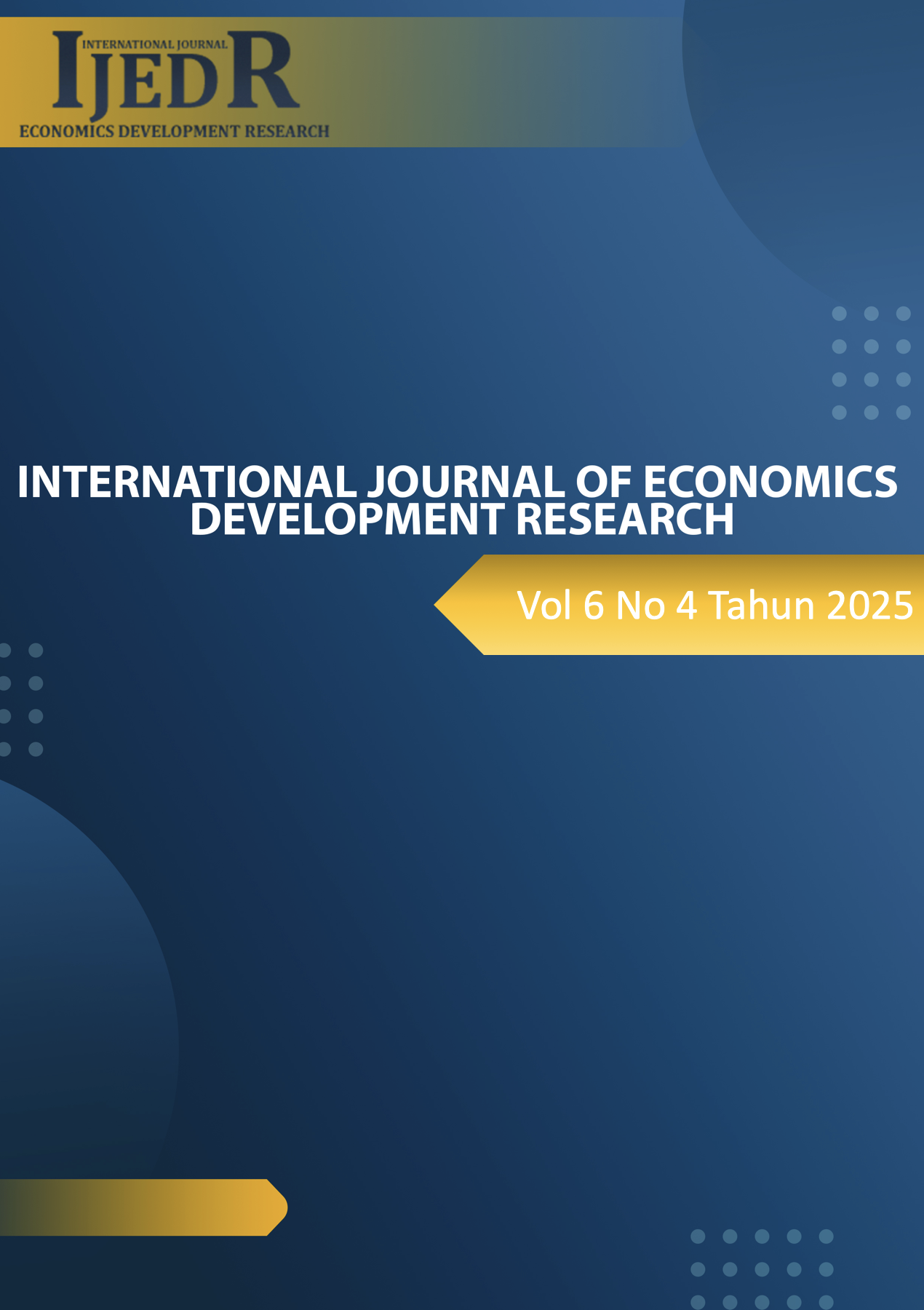Strategic Email Marketing for Customer Retention: A Study of E-Commerce Practices in Panai Hulu
DOI:
https://doi.org/10.37385/ijedr.v6i5.9223Keywords:
Email Marketing, Customer Retention, E-CommerceAbstract
This study aims to examine the influence of email marketing on e-commerce customer retention within the Panai Hulu Subdistrict, Labuhanbatu Regency. In the current digital era, email marketing has emerged as a key strategy for building and maintaining long-term customer relationships. The research employed a quantitative approach with an associative design, using questionnaires distributed to respondents who are active users of e-commerce platforms. The collected data were analyzed using SPSS software to explore the relationship between email marketing and customer retention. The results reveal that email marketing plays a significant role in enhancing customer retention, indicating that effective and well-targeted email strategies can strengthen customer loyalty. These findings highlight the importance of personalization and timely communication in email campaigns, suggesting that e-commerce businesses should optimize their email marketing practices to foster sustainable customer relationships and long-term business growth.
References
Aditya, A. R. (2023). The effectiveness of social media and information technology on people's behaviour in online buying and selling transactions. Journal of Information Systems and Management, 2(3), 65–70. https://jisma.org/index.php/jisma/article/view/385
Afandi, Y. (2019). The impact of social media on social change in a community. Fidei: Journal of Systematic and Practical Theology, 1(2), 270–283. https://doi.org/10.34081/270033
Agustina, R., & Indriyani, S. (2019). On consumer retention at Giant. Journal of Marketing Research, 20–36.
Aji Ahadun Rojab, & Trihudiyatmanto, H. P. (2023). The influence of price perception, switching barriers, and consumer retention on consumer loyalty to Le Minerale bottled water. Journal of Marketing Research, 3, 8–20.
Baitulloh, S. (2024). Analysis of strengths, weaknesses, opportunities, and email marketing strategies in marketing. Journal of Marketing Strategy, 2(12), 506–521.
Chaffey, D. E. C. (2022). Chaffey: Digital marketing (8th ed.). Pearson Education Limited.
Chaparro-Peláez, J., Hernández-García, Á., & Lorente-Páramo, Á. J. (2022). May I have your attention, please? An investigation on opening effectiveness in e-mail marketing. Review of Managerial Science, 16(7), 2261–2284. https://doi.org/10.1007/s11846-022-00517-9
Chiquitita, T. C., Wolor, C. W., & Utari, E. D. (2025). Analysis of email marketing strategy implementation in increasing loyalty to Company B. Journal of Marketing Strategy, 4(2), 11–25.
Daylami, I., & Huda, N. (2025). The implications of mergers and acquisitions on efforts to improve company financial performance. Cakrawala Repositori IMWI, 8(1).
Dwi Cahya Ramadhani, I. H. (2018). Analysis of the effect of customer satisfaction, customer trust, and barriers to change on customer retention. Journal of Consumer Behavior, 10(2), 45–60.
Eneng Wiliana, & Nining Purwaningsih. (2022). The influence of digital marketing and influencers on the purchase decisions of culinary MSMEs in Tangerang City during COVID-19. MAMEN: Journal of Management, 1(3), 242–251. https://doi.org/10.55123/mamen.v1i3.641
Gunawan, I. (2015). Qualitative research methods (1st ed., 3rd printing). Bumi Aksara.
Gupta, S., & Lehmann, D. R. (2003). Customers as assets. Journal of Interactive Marketing, 17(1), 9–24. https://doi.org/10.1002/dir.10045
Irawati, R., & Prasetyo, I. B. (2021). Utilisation of e-commerce platforms through marketplaces as an effort to increase sales and maintain business during the pandemic (A study of food and beverage MSMEs in Malang). Journal of Applied Management Research (PENATARAN), 6(2), 114–133.
Kotler, P., & Keller, K. L. (2021). Marketing management (16th ed.). Pearson.
Kurniasih, E., & Apriani, D. (2022). The influence of the digitalisation era in social media on people's behaviour. Kodifikasi, 13, 47–54. http://www.ejournal.uniks.ac.id/index.php/KODIFIKASI/article/view/2539
Nobile, T. H., & Cantoni, L. (2023). Personalisation (in)effectiveness in email marketing. Digital Business, 3(2), Article 100058. https://doi.org/10.1016/j.digbus.2023.100058
Priansa, D. J., & Suryawardani, B. (2020). Effects of e-marketing and social media marketing on e-commerce shopping decisions. Indonesian Management Journal, 20, 1–12.
Putri, P. M., & Marlien, R. (2022). The influence of digital marketing on online purchasing decisions. Jesya (Journal of Economics & Sharia Economics), 5(1), 25–36. https://doi.org/10.36778/jesya.v5i1.510
Reinartz, W. J., & Kumar, V. (2000). On the profitability of long-life customers in a noncontractual setting: An empirical investigation and implications for marketing. Journal of Marketing, 64(4), 17–35. https://doi.org/10.1509/jmkg.64.4.17.18077
Samosir, C. A. (2025). Customer relationship management strategies to improve customer retention in the digital age. Repeater: Information Technology and Network Publication, 3(1), 160–170.
Siroj, R. A., Afgani, W., Septaria, D., Zahira, G., Kuantitatif, P., Ilmiah, P., & Data, A. (2024). Quantitative research methods: A scientific approach to data analysis. Journal of Quantitative Research, 7, 11279–11289.
Sugiyono. (2018). Statistics for research. Alfabeta.
Suriansha, R. (2023). The influence of customer experience in the digital age on customer retention in the retail industry. Journal of Economics and Business UBS, 12(4), 2270–2277. https://doi.org/10.52644/joeb.v12i4.269
Wang, Y., Lu, L. X., & Shi, P. (2022). Does customer email engagement improve profitability? Evidence from a field experiment in subscription service retailing. Manufacturing & Service Operations Management, 24(5), 2703–2721. https://doi.org/10.1287/msom.2022.1122
Zakaria, J. (2024). The role of e-commerce in regional economic development in Indonesia. Journal of Development Economics STIE Muhammadiyah Palopo, 10(1), 142–150. https://doi.org/10.35906/jep.v10i1.192





